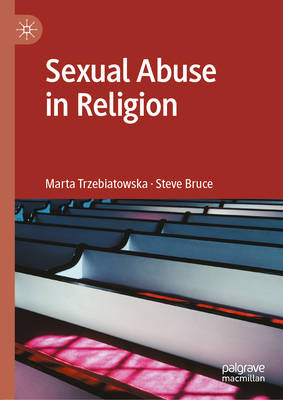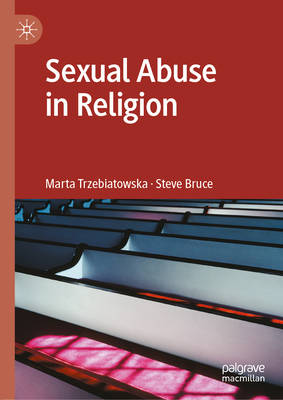
Je cadeautjes zeker op tijd in huis hebben voor de feestdagen? Kom langs in onze winkels en vind het perfecte geschenk!
- Afhalen na 1 uur in een winkel met voorraad
- Gratis thuislevering in België vanaf € 30
- Ruim aanbod met 7 miljoen producten
Je cadeautjes zeker op tijd in huis hebben voor de feestdagen? Kom langs in onze winkels en vind het perfecte geschenk!
- Afhalen na 1 uur in een winkel met voorraad
- Gratis thuislevering in België vanaf € 30
- Ruim aanbod met 7 miljoen producten
Zoeken
Omschrijving
This book examines the complex and troubling relationship between religion and sexual abuse through a sociological lens. Drawing on hundreds of examples spanning two centuries, it offers a comparative analysis of abuse in religious versus secular contexts and investigates systematic differences across various religions. From motives and opportunities to the organisational constraints that shield perpetrators, the study uncovers patterns that highlight gender as a central factor shaping the dynamics of abuse and the challenges in addressing it. The book explores two critical questions: does sexual exploitation within religious or spiritual contexts differ significantly from its secular counterpart? And do different religious traditions systematically foster or inhibit such misconduct? While predatory behaviour is not unique to religion, this study considers whether religious settings are particularly susceptible to abuse and whether the characteristics of such exploitation vary between faiths. Using case studies from major world religions, New Age spirituality, and predominantly Western contexts like the UK and USA, the book delves into how religious authority and cultural silences create environments ripe for exploitation. It also addresses false accusations, contextualising how religious rivalries often weaponise claims of sexual misconduct. This accessible yet rigorous study draws parallels with secular abuses and highlights the broader implications for institutions and communities. With its analytical depth and clear presentation, this book is essential reading for anyone seeking to understand the intersection of faith, power, and vulnerability in the context of sexual abuse.
Specificaties
Betrokkenen
- Auteur(s):
- Uitgeverij:
Inhoud
- Aantal bladzijden:
- 267
- Taal:
- Engels
Eigenschappen
- Productcode (EAN):
- 9783032049902
- Verschijningsdatum:
- 31/10/2025
- Uitvoering:
- Hardcover
- Formaat:
- Genaaid
- Afmetingen:
- 148 mm x 210 mm
- Gewicht:
- 485 g

Alleen bij Standaard Boekhandel
+ 152 punten op je klantenkaart van Standaard Boekhandel
Beoordelingen
We publiceren alleen reviews die voldoen aan de voorwaarden voor reviews. Bekijk onze voorwaarden voor reviews.









